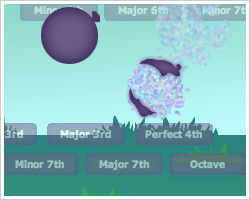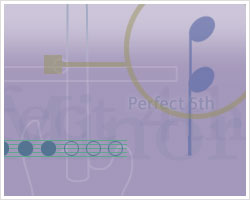A harmonic interval occurs when two notes are played at the same time. Intervals can also be melodic, meaning that the two notes are played in sequence, one after the other. For example, taking C as the tonic (the "1" or the first degree of the scale), then the third degree of the C major scale is E, so the interval between C and E is called a major third. If the second tone in a major interval is lowered by one half step, the interval becomes minor. The example below shows a major third and a minor third, each starting on C.




Use the Interval Demo application below to compare the sounds of different harmonic intervals. First select the bottom tone, then press the buttons to hear how various harmonic intervals sound when played from that tone.
Harmonic Drops will help you quickly recognize the most commonly used harmonic intervals. It starts with a small set of the most basic intervals and progresses gradually through the complete set, played with a variety of instruments.


